300-630 Cisco Implementing Cisco Application Centric Infrastructure - Advanced (DCACIA) Free Practice Exam Questions (2025 Updated)
Prepare effectively for your Cisco 300-630 Implementing Cisco Application Centric Infrastructure - Advanced (DCACIA) certification with our extensive collection of free, high-quality practice questions. Each question is designed to mirror the actual exam format and objectives, complete with comprehensive answers and detailed explanations. Our materials are regularly updated for 2025, ensuring you have the most current resources to build confidence and succeed on your first attempt.
Refer to the exhibit.
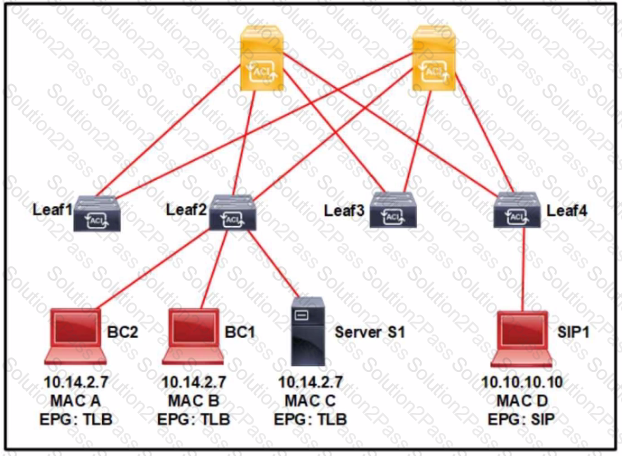
Server S1 is load balancing traffic received from SIP1 to BC1 and BC2. The Cisco ACI fabric must learn the IP address of S1 and unlearn the BC1 and BC2 IP addresses. Which two actions must be taken to meet these requirements? (Choose two.)
Refer to the exhibit.
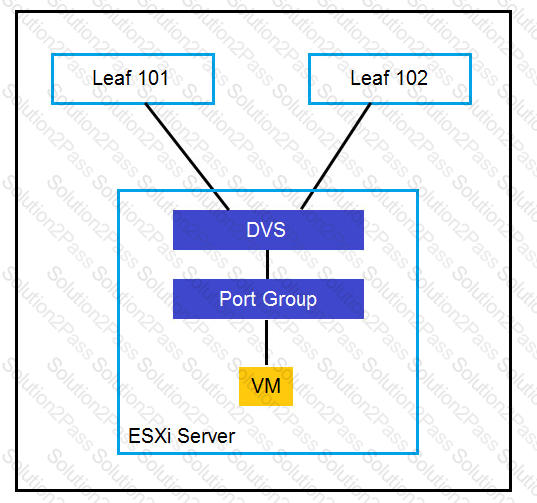
An engineer is configuring a vSwitch policy in the existing Cisco ACI fabric. The requirement is for the Cisco ACI leaf to learn individual MAC addresses from the same physical port. Which vSwitch policy configuration mode must be enabled to meet this requirement?
An engineer is configuring ACI Multi-Pod between two data centers and must plan the physical cabling in the primary data center. How must the Cisco ACI Multi-Pod topology be connected?
Refer to the exhibit.
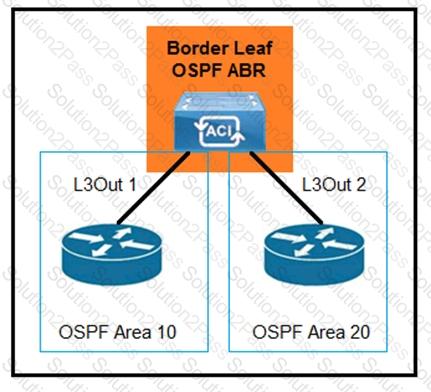
Which configuration must be implemented to allow intra-VRF transit routing between the two external routers?
A leaf receives unicast traffic that is destined to an unknown source, and spine proxy is enabled in the corresponding bridge domain. Drag and drop the Cisco ACI forwarding operations from the left into the order the operation occurs on the right.
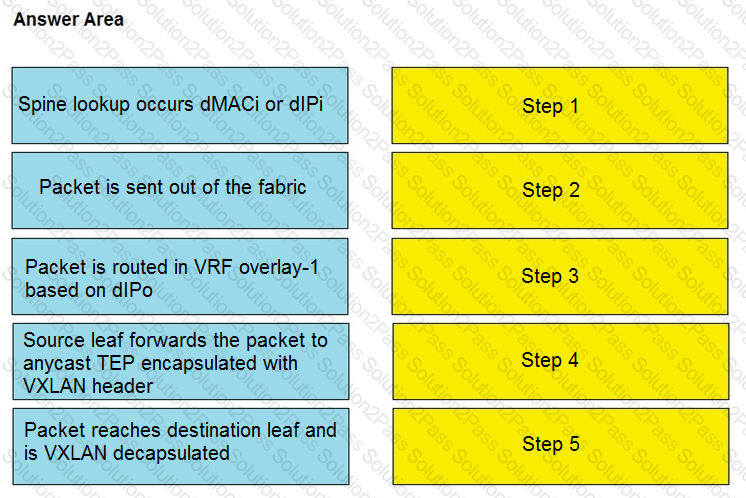
Refer to the exhibit.
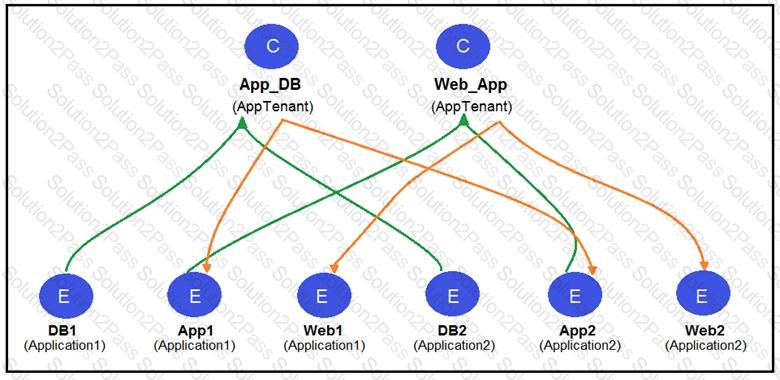
Two application profiles are configured in the same tenant and different VRFs. Which contract scope is configured to allow communication between the two application profiles?
Refer to the exhibit.
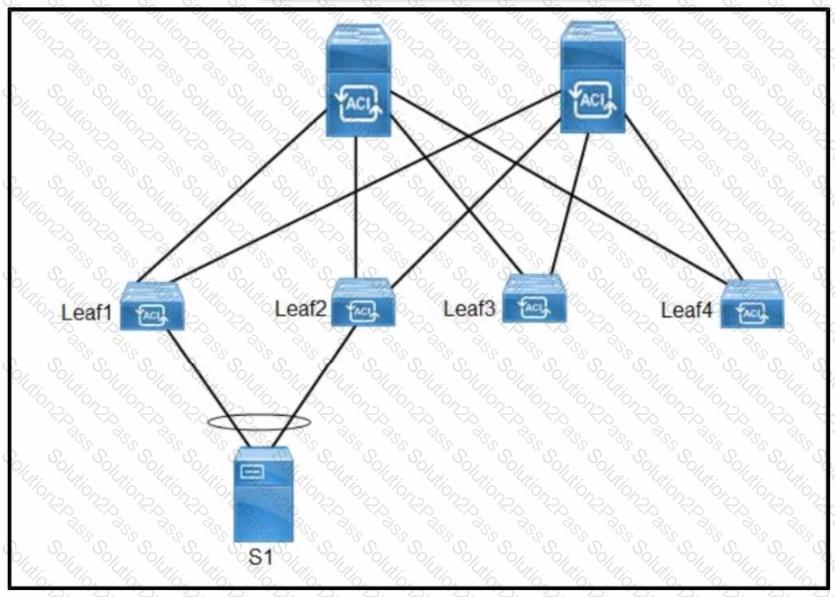
A Cisco ACI fabric must be integrated with VMware. Leaf1 and Leaf2 are connected to S1 using a VPC. The object VMware Virtual Distributed switch VPC Policy group type has been created in the fabric. Which mode must be set for the port-channel policy to allow the failover and the full use of the bandwidth in both directions?
Refer to the exhibit.
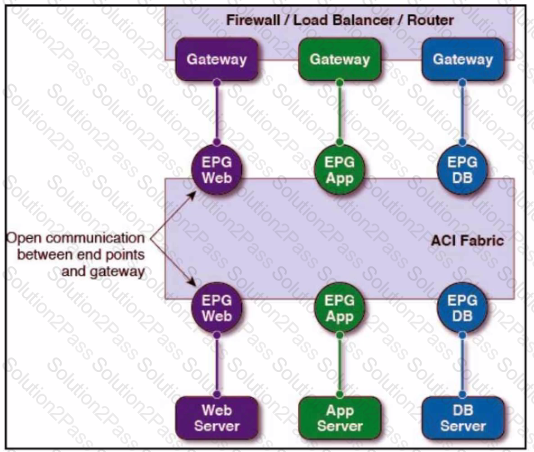
Which type of design approach is shown?
Which device replicates Broadcast. Unicast. and Multicast (BUM) frames to all remote sites in a Cisco ACI Multi-Site with multiple stretched bridge domains?
What is the advantage of implementing an active-active firewall cluster that is stretched across separate pods when anycast services are configured?
Refer to the exhibit.
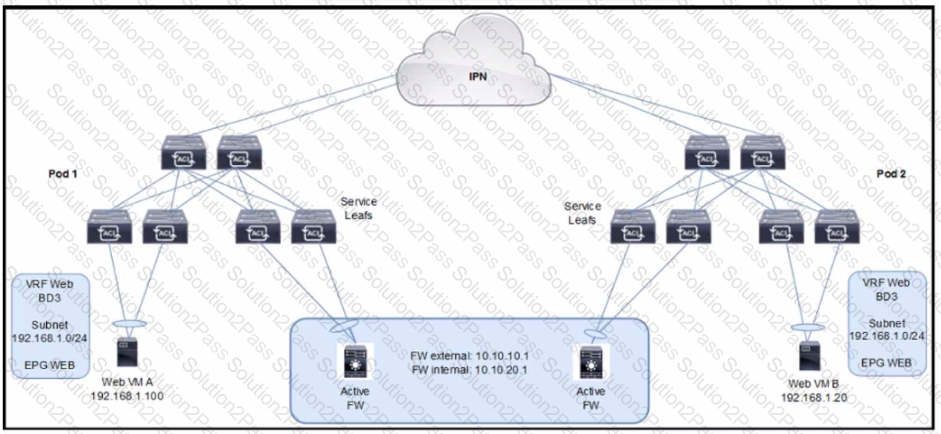
An engineer is deploying a Cisco ACI Multi-Pod with an independent active/active Layer 3 firewall cluster across the pods. Which task must the engineer perform to prevent the creation of duplicate IP/MAC entries across the pods?
Which action should be taken in Cisco ACI to reassign a unique globally scoped pcTag to an EPG that provides a global contract?
Refer to the exhibit.
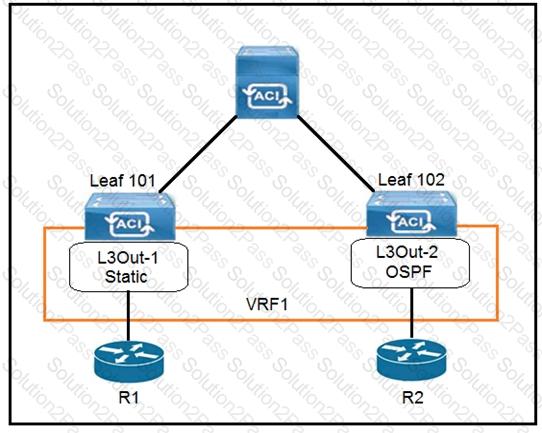
The 0.0.0.0/0 is configured as a default static route on L3Out-1. Which action should be taken for the 0.0.0.0/0 prefix to advertise out on L3Out-2 OSPF?
An engineer deployed a Cisco ACI fabric and noticed that the fabric learns endpoints from subnets that are not configured on a bridge domain. To meet strict security requirements, the engineer must prevent this behavior. Which action must be taken to prevent this behavior?
What are two characteristics of Cisco ACI interaction with MSTP? (Choose two.)
Refer to the exhibit.
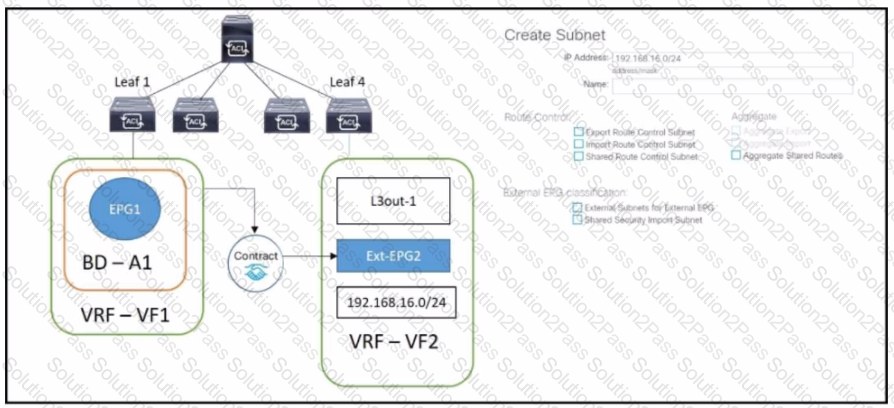
The external subnet and internal EPG1 must communicate with each other, and the L30ut traffic must leak Into the VRF named "VF1". Which configuration set accomplishes these goals?
An engineer must limit local and remote endpoint learning to the bridge domain subnet. Which action should be taken inside the Cisco APIC?
An engineer created a Cisco ACI environment in which multiple tenants reuse the same contract. The requirement is to prevent inter-tenant communication. Which action meets this requirement?
Refer to the exhibit.
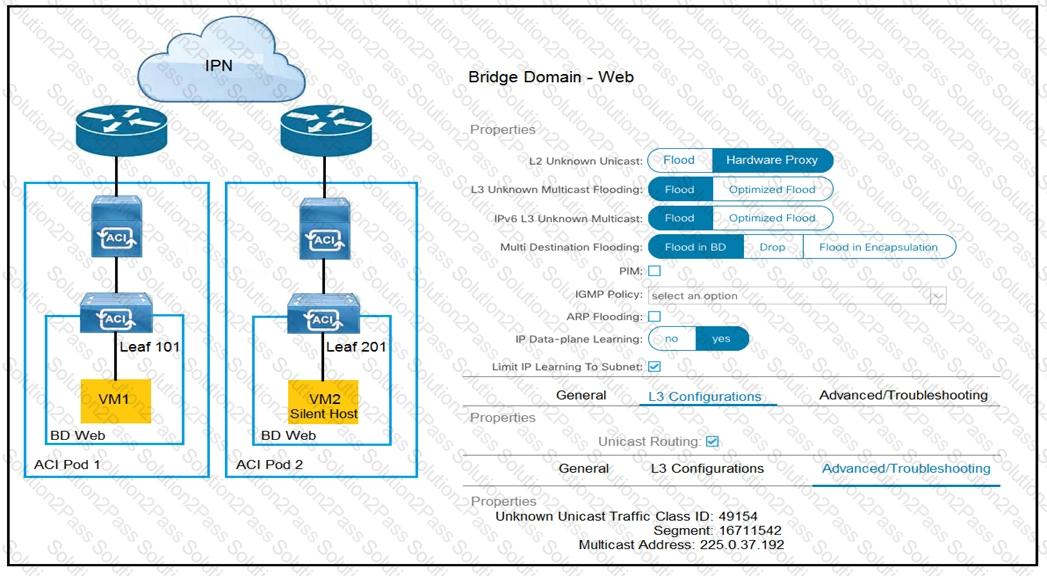
How is the ARP request from VM1 forwarded when VM2 is not learned in the Cisco ACI fabric?
Which two actions are the Cisco best practices to configure NIC teaming load balancing for Cisco UCS B- Series blades that are connected to the Cisco ACI leaf switches? (Choose two.)

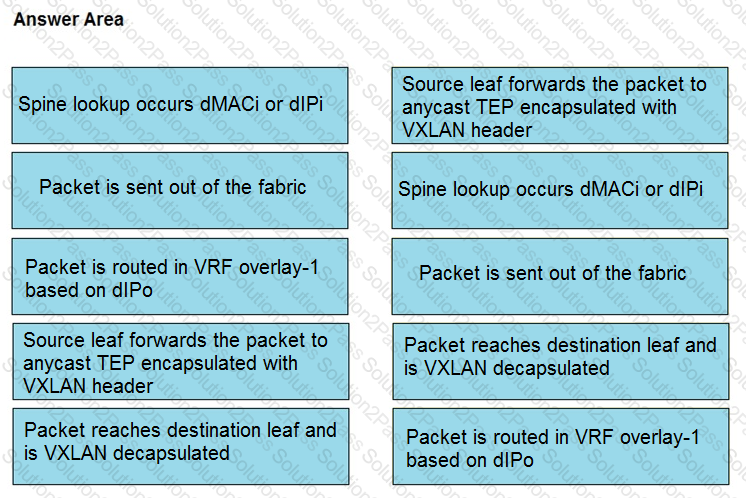 Table
Description automatically generated
Table
Description automatically generated